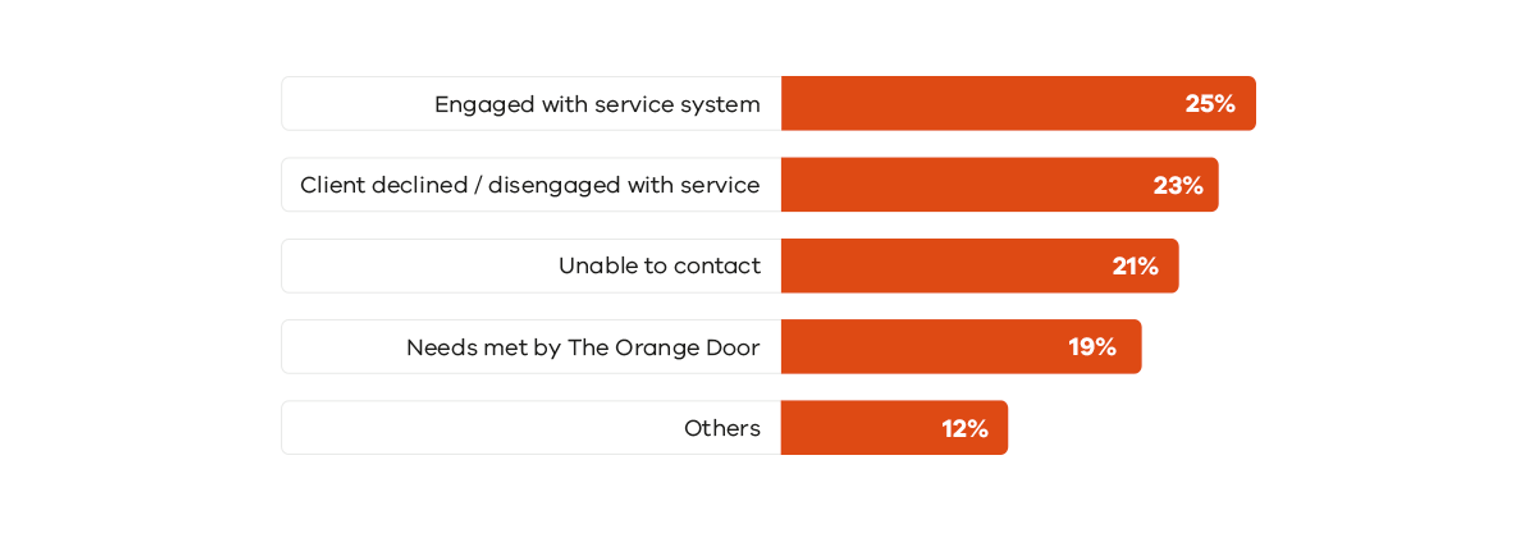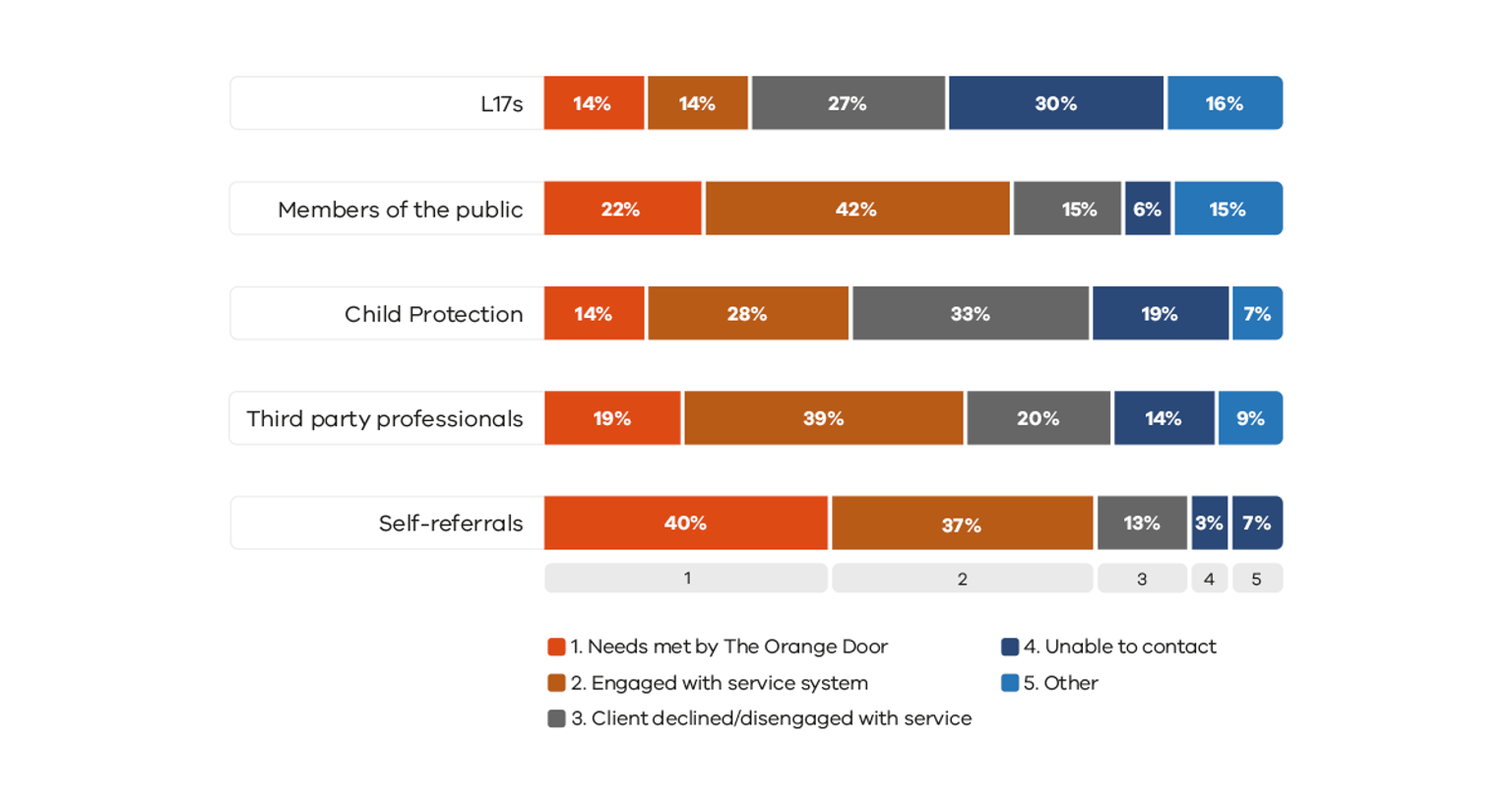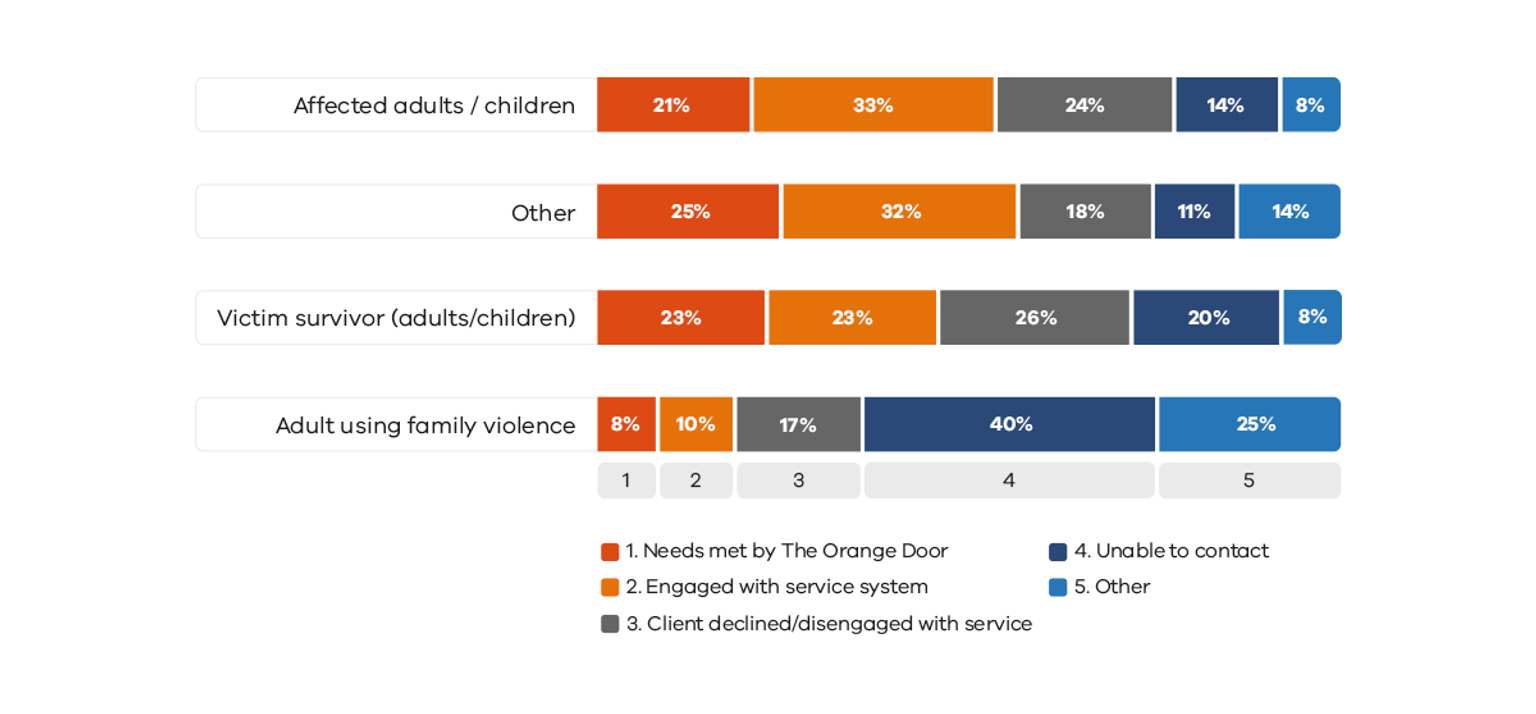The Orange Door network ends involvement with an individual or family for several reasons. These can include where the person’s needs are met within The Orange Door, the person is connected to a service that they need, the person decides not to engage with The Orange Door or the person could not be contacted despite multiple attempts by The Orange Door practitioner.
In 24.6% of cases clients required further support and The Orange Door connected them to a service to meet their additional needs such as housing, mental health and alcohol and other drug services. In 19.5% of cases, clients had their needs met by The Orange Door without requiring the allocation of further supports (Figure 15).[1]
This included cases where people were seeking information and advice, people were provided with a crisis response, or their needs were met through the use of brokerage funds to purchase immediate supports (such as consumables or safety and security adaptations or repairs).
This indicates that in over two fifths of cases (44%), The Orange Door met the needs of clients or connected them with a further service for additional supports. The Orange Door was unable to contact the person referred in 21.3% of cases, and in a further 23.0% of cases the person chose not to take up the service offering.[2]
When comparing case closure reasons across different referral types, people who self-referred were more likely to have their ‘needs met’ by The Orange Door (40%) compared to those that were referred via an L17 referral (14.2%) (Figure 16).[3] With a self-referral, the person is ready for support and actively seeking help, compared to other referral types. For L17 referrals, the primary reason for case closure was due to being ‘unable to be contacted’ (29.9%).
Case closure outcomes vary widely between different types of clients (Figure 17). The proportion of clients who had their needs met by The Orange Door or were connected to a further service was 46.3% for victim survivors of family violence, 18.2% for persons using family violence and 54.3% for clients presenting with child safety and wellbeing needs (referred to as affected adults or children).
Notes
[1] Note that case closure reasons with small proportions have been grouped into ‘other’.
[2] Instances where practitioners are unable to contact a person occur predominantly with L17 reports where people don't respond following an incident. Practitioners in The Orange Door try calling a minimum of three times and at different times of the day to maximise the opportunity for engagement, however some people choose not to engage given The Orange Door is a voluntary service.
[3] Note that case closure reasons with small proportions have been grouped into ‘other’ and some client roles have also been grouped.
Updated


